Novexa intervenes upstream and downstream to deal with different types of defects. Novexa can help you reduce this rate of wear in collaboration with lubrication professionals. This obviously conditions the life of the pinion/crown harness
Excessive Wear Speed
This damage is very often linked to :
- Insufficient hardness
- Lubricant pollution (unsuitable crankcase or seals)
- Wrong choice of lubricant or flow rate
Novexa can help you reduce this rate of wear in collaboration with lubrication professionals. This obviously conditions the life of the pinion/crown harness and also makes it possible to postpone maintenance problems.
The inspection gauge can be provided to you to carry out this follow-up yourself.
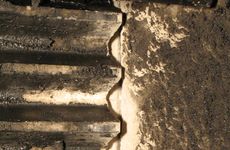


Deformation of profiles
Our training program details the origin of vibrations related to the deformations of the profiles. We note that on average, 90% of vibrations generated are linked to the frequency of the pinion/crown mesh.
By deforming a profile, at constant angular speed of the pinion, a slight delay angular is observed on the bumpy areas of the crown as well as a catch-up on the hollow areas.
This theory generates non-regular displacements between pinion and crown, and therefore vibrations and accelerations.
Shocks meshing observed on many harnesses are extremely destructive to the entire kinematic chain.
vibrations measured can be expressed as horizontal, vertical or axial.
The reasons can be :
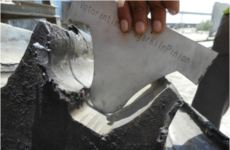


- Meshing interferences and/or profile deformation
- Range default
- Driving fault linked to differences in pitch (poor transfer of loads)
- Lateral shoulder on pinion/crown, gear coupling
- Absence of play on free bearing or absence of rigidity on fixed bearing
- Tooth bottom adjustment fault
- Pinion tooth foot jump combined with expansion or out-of-round (tooth rise)
- Pinion axis/gearbox axis alignment error
- Balancing problem on extension
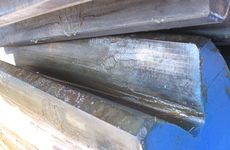


Poor temperature distribution
A misalignment can be revealed by an irregular temperature distribution on the teeth (joints that are too tight during assembly can explain such differences)
- Up to 4°C, the situation is normal: code green
- Beyond 4°C, an adjustment is useful: yellow code
- Beyond 8°C, an adjustment is necessary: code red
- Beyond 12°C, an adjustment is essential: black code
The effect of such a defect not treated in the short and medium term is always cracking or the broken toothing anticipating the replacement of the harness. Concerning the regulated bearings, temperature controls with thermocouples and clearance measurements once a year are guarantees of anticipation of incidents.
pitting
Pitting is a surface destruction often by fatigue not exceeding 0.3 to 0.5 mm in depth. Pitting is not dangerous for a gear. It does not justify any reversal or replacement.
However, it can be slowed down by a more suitable choice of lubricant.
On the other hand, by creep linked to slipping, it will promote the profile deformation . The quantification of the deformation of the profiles is therefore essential.
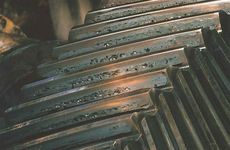


Scales
Scaling is a dangerous damage which is represented by the removal of metal in patches. This is linked to too high hertz pressure very often linked to poor distribution of the load.
For this type of damage , the wait is detrimental because the extension is done in the underlayer.It is necessary to analyze the origin of the problem and to intervene by appropriate trimming.
If the chipping reaches 50% of the width on straight teeth and 70% on inclined teeth (variable according to helix angle), a reversal or replacement must be planned.
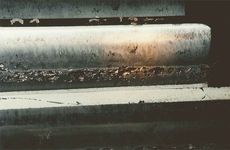


Seizure is damage related to metal/metal contact during meshing resulting in tearing of material.
We consider 2 types of seizure:
1. Seizures having generated a rise in temperature
These cover the entire surface of the teeth.
Action: a shutdown of the equipment is necessary. A drop in temperature and cleaning of the harness are necessary. A restart can be envisaged on the condition of imposing lubrication forced.
2. Seizures localized or located in slip zones
These seizures are less dangerous than the previous ones. They very often help to amplify the profile deformation.
So many vibration risks in perspective. Overgreasing can slow down or even stop this type of damage..
Tooth cracks or breaks
The treatment of a crack is necessary to stop its propagation. The urgency of the repair intervention depends on the drive report that only a gear specialist can calculate.
The limits of cracks or breakage not to be exceeded are :
- 50% for straight teeth
- 70% for inclined gearing (depends on the helix angle)
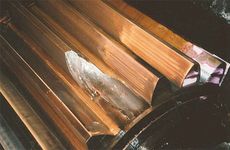


The lack of bearing resulting from partial tooth breakage does not prevent medium-term operation.
It is nevertheless recommended to intervene by reloading and reshaping the affected teeth.
If the tooth breakage is total, operation is impossible; repair is mandatory.
Such a repair must be carried out respecting the steps and profiles. Novexa has the experience required for these interventions.
Our references are numerous and our repairs are durable.

